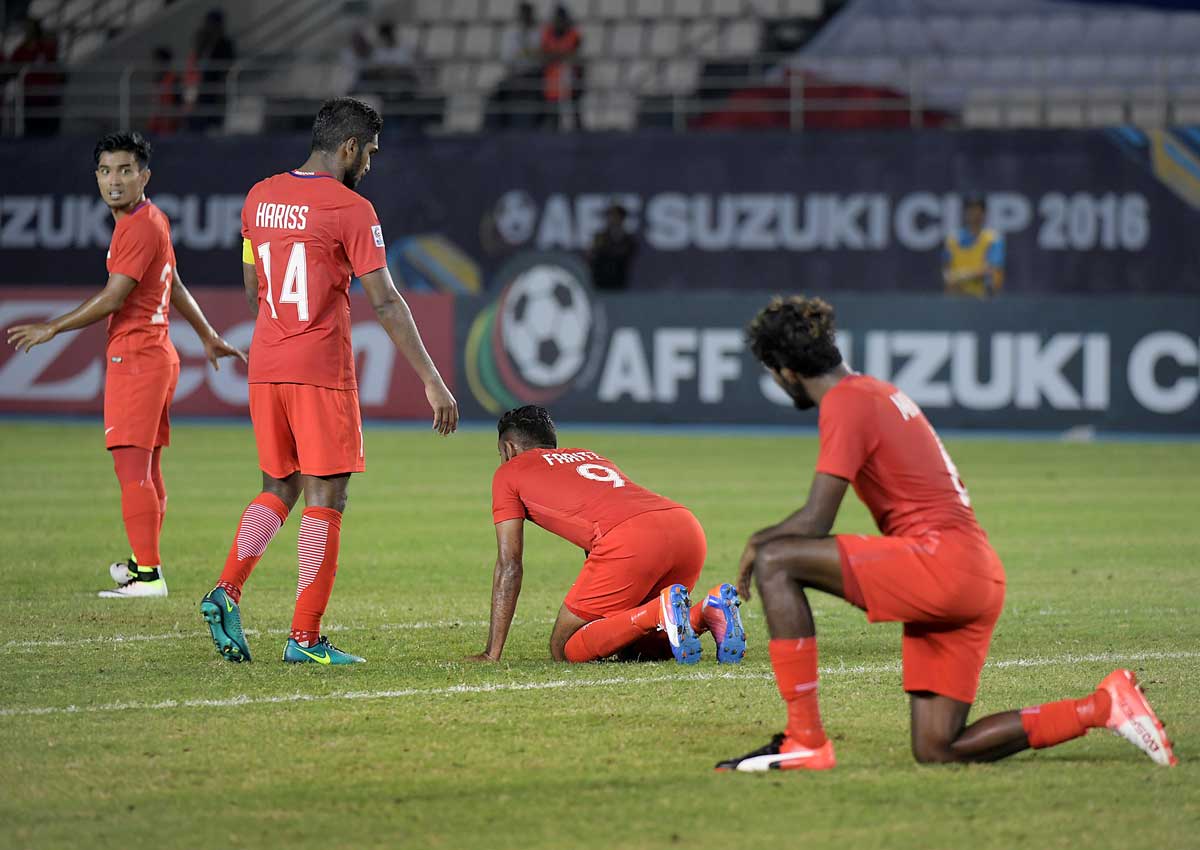When a football campaign ends prematurely and the beaten team return with their tails between their legs, the finger-pointing starts.
It is par for the course. There is often a villain or two who bear the brunt of the heat.
But, after V Sundramoorthy’s Lions got booted out in the group stages of the AFF Suzuki Cup with only one goal and one point – Singapore’s worst showing in history – there seems to be little consensus as to what went wrong and where the buck should stop.
Was it team selection? Was it Sundram’s ultra-defensive tactics? And if key defender Baihakki Khaizan’s blog post (which was later withdrawn) meant something, was there dissension in the team?
One thing seems more certain – there is much to fix.
Taking a helicopter view, former Hougang United coach K Balagumaran believes the lack of training facilities is a sign of unfulfilled promises.
He said: “If I’m honest, everything is wrong. When we launched Goal 2010, I was in the system, we were hopeful, moving forward, and there were several promises made – but little was carried out.
“And now we have gone even lower. Our development systems are bad, we don’t have enough facilities for youth training, the players don’t have a professional culture, and I don’t think Sundram should take all the blame for this result.
“Because this is the result of all these things going on in the background all these years.”
The Goal 2010 project was aimed at getting Singapore to qualify for the World Cup Finals that year. It included the launch of youth development programmes in S.League clubs and the foreign talent scheme.
SYSTEM
Bala, a former Football Association of Singapore (FAS) youth coach, insists there are no quick fixes, and called for development systems to be set up properly.
R Suria Murthi, a former FAS youth coach and ex-international, believes the problem lies even deeper in the Singapore football psyche.
For one, he is annoyed with the Lions’ fitness.
“Fitness belongs to the player. They are professionals and, if they are not fit, they should be shot,” said the 58-year-old, recalling how in his era of amateur and semi-professional football, he trained up to three times a day to keep in shape.
“Football is now their job and, if they can’t even do this, it is clear that there is no passion to wear the flag on their jersey.”
Suria also believes the footballing culture, fuelled by hotbeds like Farrer Park and Sembawang, is dead, and it is showing in the technical abilities – or the lack thereof – in young players.
“This is one of the reasons I’ve given up coaching – kids these days have no basic fitness, and they want to spend more time on their computers and mobile phones than wanting to go out and play – and I’m not just talking about football,” he said.
NO FITNESS
“And because they don’t play enough, young footballers don’t have fitness, and they don’t have technique.
“They can’t stop a ball properly, and because of all that, there’s no point even talking about tactics.”
Suria believes these issues manifesting in the national team are just the tip of the iceberg.
Former Singapore international Steven Tan agrees with Suria that there is little pride in wearing the Lions’ shirt and called for national players to be picked on current form, with younger players coming up.
“We need to tap on the National Football Academy youth teams, but make it more competitive, with the squad being reviewed every six months – otherwise, players take their spots for granted,” he said.
Tan pointed the finger at the FAS for giving Sundram a short-term contract and calling him the “caretaker” coach of the Lions.
“They put him under pressure to do the job, and do what’s enough to hit the short-term target by bringing in experienced players,” he said.
“It takes two, maybe three years, to build a team, and he should be given time.”
BE BOLDER
It is a fact that Suria agrees with, even if he would have preferred Sundram’s Lions to have played more offensively.
Former Singapore captain Nazri Nasir believes the first step to a short-term fix for the national team is for Sundram to bring in fresh blood – and even that will take a year or two.
“You can see that some players need to retire (from international football) and I’m sure they know that their time is up,” said Nazri.
“We must start to give the young ones a chance to get involved, and even then it will take a few years for them to get to the level we need.”

This article was first published on November 28, 2016.
Get The New Paper for more stories.






